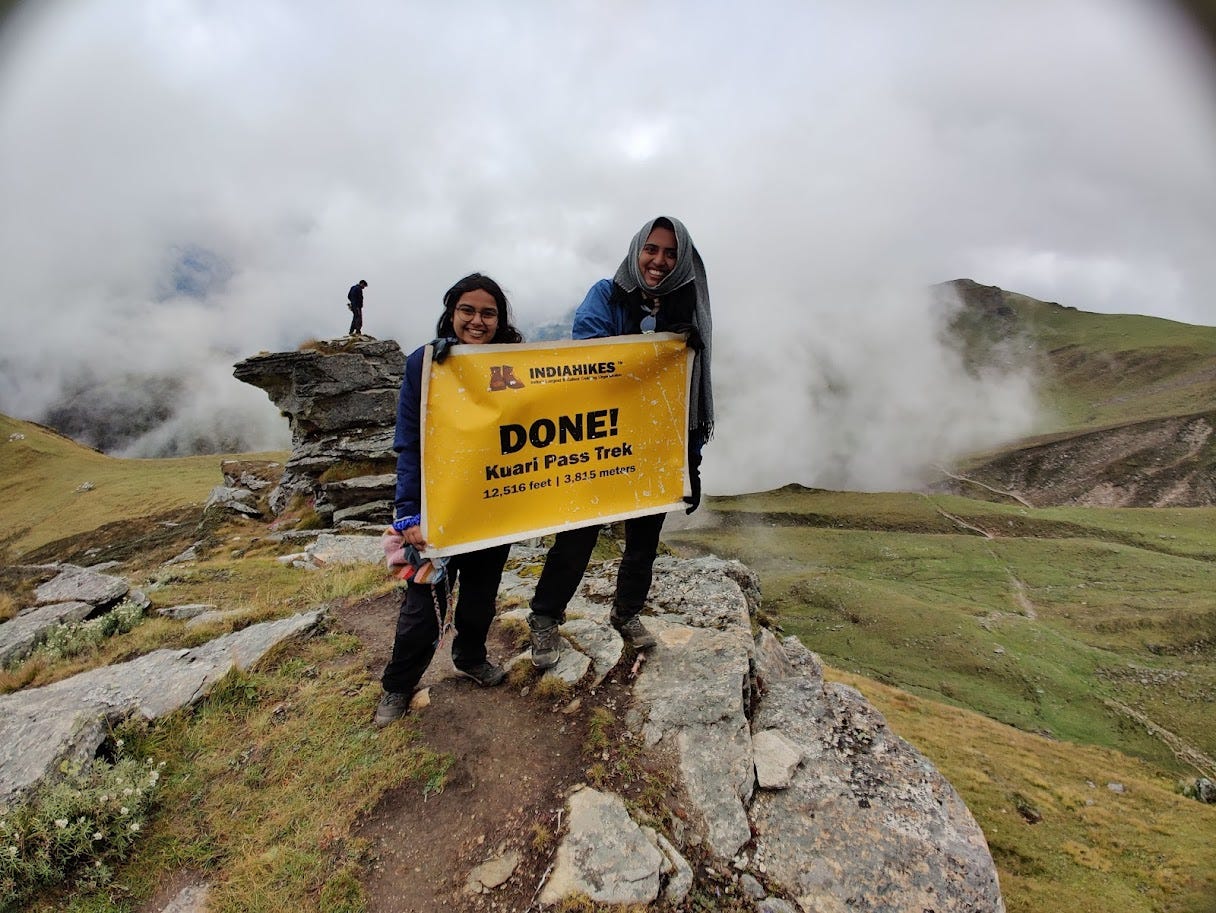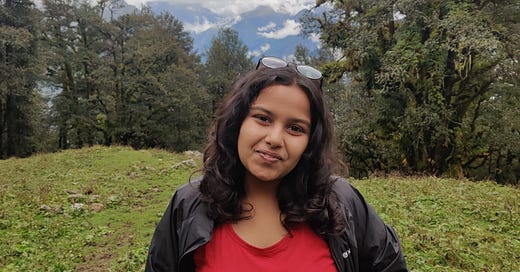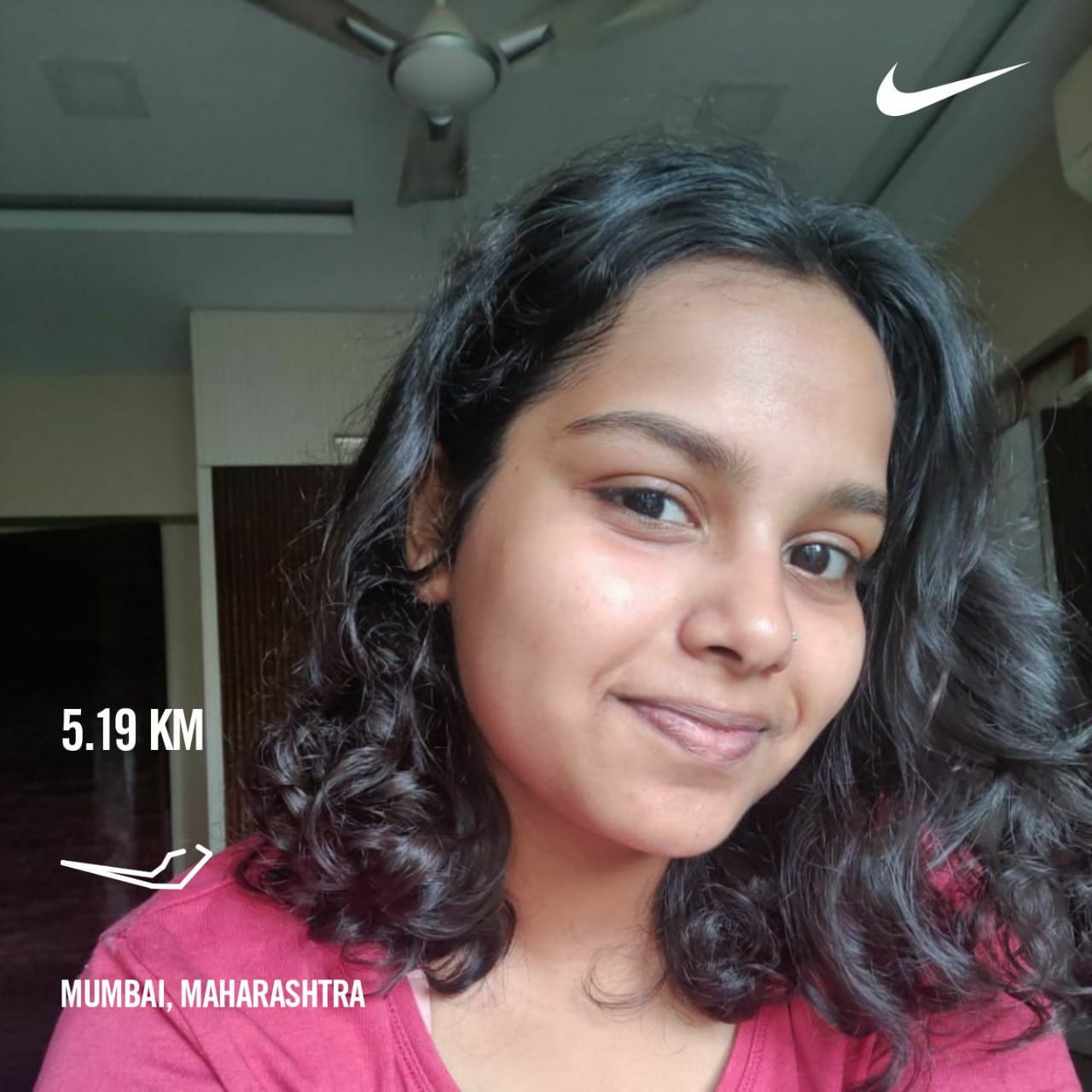How I climbed my first Himalayan trek as a chump
and returned home a champ (almost) I Indiahikes edition
Dearest Reader,
First most, I have decided to channel my Penelope energy from Bridgerton after the third season came out, hence the greeting. Yes, I am delusional. Also yes, let a girl dream.
Secondly, while I have donned several phases of fictional personas over the years - and in not a single one of them have I been particularly athletic. My inclination to adventures and activity began & ended with watching Dora the Explorer every time it came on, where in true spirit, I imagined myself to be Dora.
This aversion to being active when I was a child was not because of the lack of stimulus - mind you. If I was prone to being sedentary, my mother was equally relentless. We tried it all - karate, swimming, dance classes, summer camps. But in the end, all that came out of it were incredibly cute photos & a piling list of unfinished hobbies.
So it was honestly surprising that come twenties, I had developed an inkling for movement, trekking & adventure. Call it the post-covid epiphany or the fear of being cooped up again, but I started taking a genuine liking to moving and nature discovery. On one of my first trips to Uttarakhand in 2021 with my friend Tiru, I was introduced to the idea of Himalayan trekking. Come 2022, I was preparing for my first trek with my best friend - and a big one at that.
I chose Kuari Pass, a beautiful mountain trek in the Garhwal region of Uttarakhand India, for my first experience. Being a total beginner, a 4-day trek covering approximately 20 kilometers seemed like a challenge enough for me. So how did a person with two left feet and almost zero co-ordination climb a Himalayan trek, why should you try it too? Read on to know.
Pre-trek preparation
The actual preparation of the trek began approximately a month before D-day where I had to build my stamina to a level of racing 5 kilometers in under 30 minutes. I remember my first jog where 2 kilometers were a struggle. But at the end of day 30, I was able to reach the requisite milestone to be ‘trek ready’. Looking back, a very specific fear of being left behind on a trek only to become breakfast for bears can be a great motivator for running as fast you can. Give it a shot.
So if you are a beginner just like I was, your baby steps begin with learning to jog comfortably for a distance of approximately 5 kms in under 30 minutes. Strength exercises play a very important role in the preparation, because climbing steep rocks is one thing, but climbing steep rocks with a 8-10 kg rucksack on your bag is another.
That being said, preparing for a trek doesn’t just require physical preparation, but a mental warm up too. I cannot emphasize enough on how much I neglected the mental stamina required to push yourself from couch to crunching rocky terrains on long days, and it is only the mind that helps you through this. This is a good time to talk about..
Mental Preparation
While I didn’t have unreasonable expectations about scaling the first day of the trek like a champ, I didn’t expect to feel as unprepared as I did. The terrain on the first day was a rocky jagged climb, and I was all about 500 meters behind from the rest of the group at all times. For people like me, who are the tortoises in a race, it is natural to feel very demotivated. I did too, in the 2 hours that followed. But what got me through the feeling of falling behind was to not look ahead, and take it one step at a time at all times. This training of the mind - which required me to forget everything else and just keep going, was the resilience I built in the process. I sincerely believe that while physical fitness can take you far, mental resilience is what keeps you going when your body feels maxed out, but you still have it in you to take it one eenie step at a time.
And of course, I made it through the first day, and there is video evidence that I made it in one piece—arms, legs, and everything! I expected to look like a cool trekker but ended up looking like a slow-moving target for forest bears. But hey, baby steps, right?
Goodbye, comfort zone
A famous fish influencer from the Disney universe was quoted that in challenging times, all you can do is just keep swimming. Who am I to argue? This especially served me well on the trek, where heavy rains & extreme cold on the second, third & fourth day made the climbs harder. Anticipating unexpected issues & challenges are part of the experience - and the sweet mountains were truly trying hard to push me off the edge, pun intended. Let me paint a picture. You are 11,000 meters off elevation on the mountains, it’s raining big cats & gruffy dogs. To add to this, your boots are wet, your clothes are wet, your pants are wet, your socks are wet, and your tent is wet. It’s really cold.
Amidst all this, I had a tryst with slippery paths, murky roads, and rain-drenched climbs. I fell on my bum—hard—multiple times, often, and abundantly. By the sixth fall, I just let myself slide into the mountain’s DMs, so to speak. But at that moment, I couldn’t do anything but keep swimming. Whether I liked it or not, I was out of my comfort zone, and whether it suited my bum or not, I had to adapt.
So, if you too find yourself facing something hard, remember: it feels hard because you’re pushing yourself out of your comfort zone. While we can't always prepare for every challenge, it’s crucial that we adapt. Trekking is all about adaptation and evolution—the more we prepare ourselves mentally and physically, the less these challenges will get us down.
You can be a clumsy trekker, but still a trekker
As a first-time trekker, I imagined I would come back with agility, balance, and good core strength. When I took on this challenge, I wanted to reinvent my childhood image of myself as lacking athletic acumen. It was important that I built some character through sports.
But it took me my second trek—another Himalayan one—to realize that my balance was still off, my steps were still clumsy, and my fear of heights was still very much there. Oh, and I was still the slowest in the group. Despite all this, I wanted to keep trekking, even though falling on my bum was getting a tad too excessive. Two treks down, as I write this, I don’t feel like I will do better on the next one.
And I guess… that’s okay. You see, I am no longer fixated on being a perfect trekker to sign up for a trek or to do it again. It has taken a bit of kindness and acceptance to realize that I can be the clumsiest person out there and still do something if it makes me happy. As obvious as this realization sounds, it helps me undo my own unrealistic expectations of being perfect at something to see it through, and that feeling is truly liberating.
So if you are like me, I absolutely recommend going on a hike or a trek. And if you are anything like me, you will fall, you will stumble, you will slip, and you will cry. But if you can steal one moment amidst all this to take in the feeling of being alive and breathing it all in, I can guarantee you it will be a lifetime of an experience.

—
P.S - If you are planning your first trek in the mountains, I wholeheartedly recommend checking Indiahikes.com . Big thanks to Jeetu bhaiya, Anoop Sir & Naveen bhai, my trek leaders who pushed me to see this through. If you ever need to chat about how to prepare well for a trek, reach out to me at stutinabazza@gmail.com and I’d love to share my experience.





